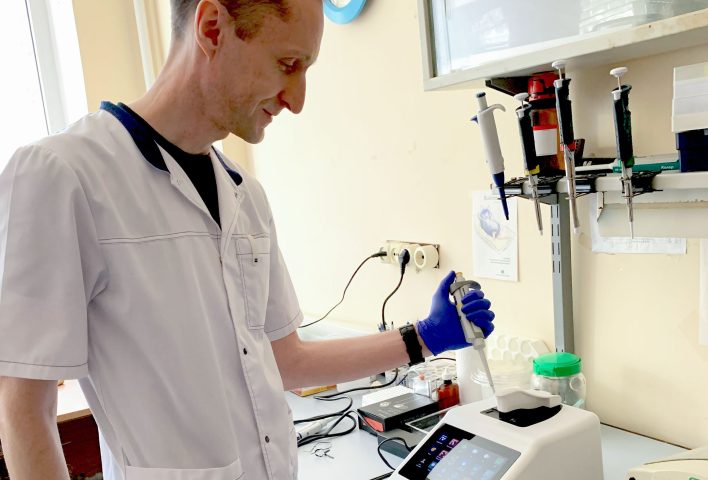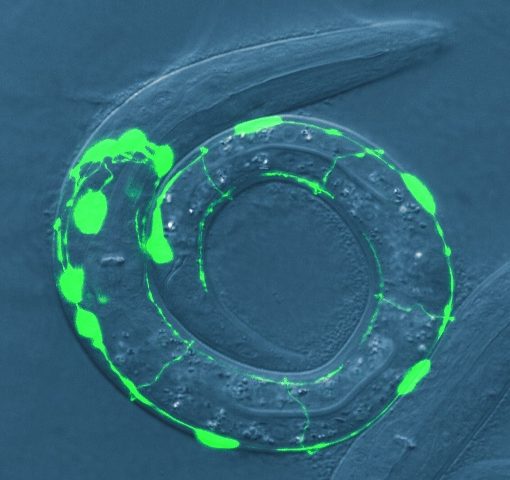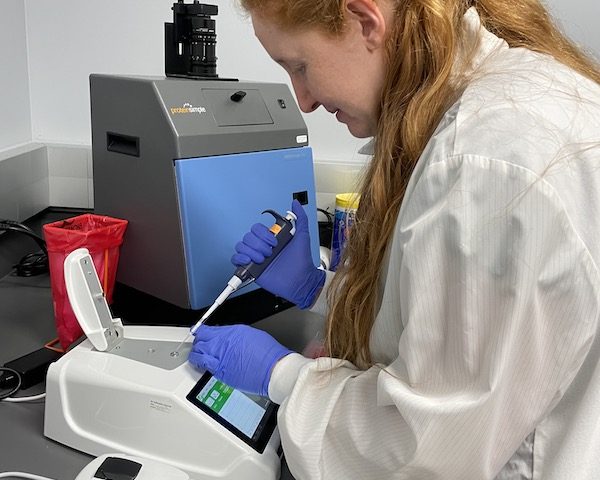Connect with DeNovix
Here, you will find ways to engage with the DeNovix global community.
Exploring our product reviews, academic publications that reference our instruments, and our collection of technical notes demonstrates the wide range of disciplines we serve. Our social media accounts are designed to provide product and company updates, share relevant articles and information, and connect with our community of scientists.
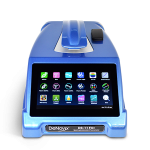
Easy to use and great for co-working labs!
We have the DeNovix DS-11 in our co-working lab. We love that it is compact, fits perfectly on the benchtop, and ready to use right out of the box. The DeNovix DS-11 is currently servicing multiple start-ups in their nucleic acid and protein quantification. Scientists in the lab find this instrument easy to use with minimal training required and are satisfied with the rapid responses and accuracy in the readings.
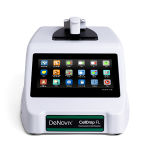








I would greatly recommend.
Coming from hand-counting cells, using the CellDrop has vastly improved my research by greatly saving me time. Plus, the user interface is very easy to use and learn. Getting to save counting protocols is great too. Overall, I would greatly recommend.
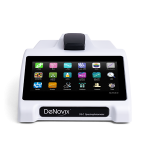



Great instrument and outstanding customer service!
The DeNovix DS-C has a small footprint which was necessary for our lab space. Upgrading the software regularly is simple to do and helps maintain the applications on the unit. After purchase customer service is some of the best I have ever experienced! I would highly recommend the DeNovix Spectrophotometers!
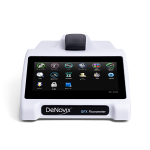



Great little fluorometer and serves our purpose beautifully! I highly recommend.
This fluorometer was just what our laboratory needed! It is economical and very user friendly. Also, the DeNovix staff continues to support well after the purchase.









Absolutely love this instrument!
This one is a game-changer! If you haven't used one yet, you are missing out on a great equipment for your otherwise tedious and inaccurate cell counting. The FL method is by far the best way to do this. I couldn't be happier!









Easy and fast.
An excellent machine that's quite straightforward to use while having a surprising number of features. It's easy to use and easy to clean. Can do brightfield, trypan blue, fluorescence, etc.









Good results and very easy to use.
Using DeNovix CellDrop for almost a year I have had the best experience with it - easy-to-use interface, high quality camera, lots of built-in applications, almost no maintenance and of course no need to use cartridges or slides. Highly recommend to anyone looking for a good and reliable automatic cell counter.








Excellent, multifunctional machine.
Excellent, multifunctional machine. I have been using for years. It is very user friendly and an excellent value.








Truly 'DS'-lightful!
I recently had the pleasure of using the DS-11 DeNovix spectrophotometer, and I must say, it exceeded my expectations. This compact instrument packs a punch in terms of performance and usability. Its impressive performance, user-friendly design, and excellent support make it an invaluable tool for researchers. If you're in need of a reliable and efficient spectrophotometer, the DS-11 DeNovix is a standout choice.








These instruments have been a huge improvement to the way we had to do things before.
The product is very easy to use and takes up very little space on the benchtop. We wanted to move from the Nanodrops and Ocean Optics we were using previously to one stand-alone system that would meet the needs of both our Life Science and Chemistry programs. Less reagents, less waste, and no cuvettes are also big pluses for us.









Highly Recommended.
Highly recommend for quick and accurate counts. Very pleased with this cell counter! Compact for benchtop and easy to use with no consumables needed. Excellent customer service and guidance whenever required.




It is very important to me to get the job done.
The product has unique accuracy and suitability to the job. Indeed, it is the most sensitive and precise device I've ever used in my laboratory.









CellDrop is a must in all cell culture labs!
CellDrop is so easy to use. I can count any type of cells in less then 30 seconds without the use of single use plastic. We save time, money and get more accurate counts, even with PBMCs.









10/10 for us!
We were looking for a cell counter that would work for both cell culture and for analyzing fresh blood samples without too much dilution of the sample. We wanted something that was relatively fast and easy to use, reproducible and preferably didn’t produce much plastic waste. After having demoed five different instruments, CellDrop was the only one where we got it all, and it has additional features that can be very useful. Very happy with this piece of equipment!




Purchase this product!
This spectrophotometer is an excellent piece of lab equipment! It is easy to use and data is displayed clearly. There are also options to email/export data to your own computer. When performing assays, the UV-Vis functionality makes data collection a breeze!








Great spectrophotometer.
We had the chance of testing the DS-11 series spectrophotometer/fluorometer before purchasing it. The different people working with this equipment were really satisfied with its quality, reproducibility, and ease of use. Acquiring it was an easy decision. Also, really happy with the customer service.








The instrument gives consistent results that are a huge help with my work!
The DS-11 FX+ has helped with making my work easier and faster. It can give good readings for much higher concentrations of peptides than other instruments I have used and is very accurate! The instrument also has a great user interface!








Very easy to use! Would recommend it!
The product was ready to use out of the box! That made it easy on me and I did not have to do any calibration! I would recommend buying this product.




Fast result and easy operation. Compact and handy.
Handy equipment with modern look. Easy to operate with android platform. Ease of standard curve preparation. Option of adjusting sample volume and standard DNA volume as per samples. Easy connectivity with WiFi and data storage facility.




A must buy instrument for nucleic acid & protein estimation due to its sensitivity.
The instrument is very helpful to estimate DNA from processed and degraded samples which have a very low concentration in extraction, as it can measure DNA between 0.5 pg/µL and 4000 ng/µL. It is more sensitive and reproducible than its competitors in the market. It is very user-friendly and can provide results in 2 seconds. It can also quantify proteins so it is a must buy an instrument for any laboratory.









My favorite piece of lab equipment
Simple to use and accurate, reduces waste and has a small footprint. After sales service is excellent.
SelectScience and Biocompare provide scientists with a venue for posting impartial reviews of research instrumentation.
Leave us a review using the links below! As a thank you, we’ll send you a DeNovix t-shirt or a similar gift.
We also invite you to leave us a rating on Google. Tell us about your experience with DeNovix!

